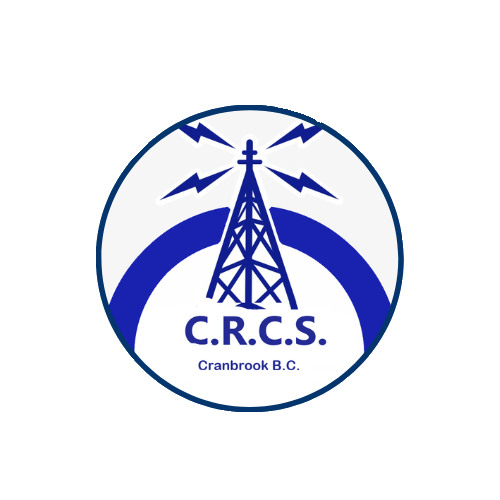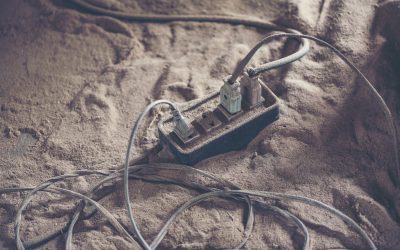When summer rolls around, most people are thinking BBQs, camping, and long evenings outside. For amateur radio operators, however, summer signals something else entirely—changes in propagation.
Propagation, the way radio waves travel from one point to another, can shift dramatically with seasonal changes. Understanding those shifts is key to making successful contacts, especially on HF and VHF bands. Whether you’re logging your first SSB contact or you’re an old hand at CW, knowing how summer propagation works can make all the difference.
In this post, we’ll break down what propagation is, how summer affects it, and what strategies every ham can use to stay active and successful during the warmer months.
What Is Propagation?
At its simplest, propagation is how a radio signal moves from your antenna to another station. Signals can travel in multiple ways—ground wave, skywave (or ionospheric), and line-of-sight propagation being the most common.
-
Ground wave: Usually seen on lower frequencies like 160m or 80m, ground waves follow the earth’s curvature.
-
Skywave: High Frequency (HF) signals bounce off the ionosphere, allowing global communication.
-
Line-of-sight: VHF and UHF signals travel in straight lines, ideal for local comms, but sometimes capable of reaching far with the right conditions.
Propagation is dynamic and heavily influenced by the atmosphere—especially the ionosphere. And that’s where summer changes everything.
Why Summer Propagation Is Unique
Summer brings longer days and stronger solar radiation, which impacts the different ionospheric layers (D, E, F1, and F2). These layers play a major role in how well signals bounce and how far they travel.
Key Changes in Summer Propagation:
-
Increased D-layer absorption
-
The D-layer is more active due to stronger solar radiation.
-
This means more absorption of lower HF bands like 40m, 80m, and 160m during the daytime.
-
Result? These bands don’t perform as well until the sun sets.
-
-
Sporadic E-layer activity (Es)
-
The E-layer can become highly ionized for short periods, reflecting even VHF signals like 6m and 10m.
-
Es events are unpredictable, but when they hit, they allow for unexpected long-distance contacts—even across continents—on bands that typically don’t support that.
-
-
Weaker F-layer performance
-
The F-layer, responsible for long-haul DX, often becomes less reliable in summer.
-
It can cause degradation on higher bands like 15m and 12m unless there’s a significant solar flare or geomagnetic event.
-
-
Tropospheric ducting on VHF/UHF
-
Hot weather and temperature inversions can cause ducting, a phenomenon that allows 2m or 70cm signals to travel hundreds of kilometers.
-
This is especially useful during the early morning or late evening.
-
Best Bands for Summer Operation
Understanding which bands shine during the summer is key to making the most of your shack or portable operation.
-
6m (The Magic Band)
-
6 meters comes alive in summer thanks to sporadic E-layer propagation. Keep an ear on 50.125 MHz—DX can pop up when you least expect it.
-
-
10m & 12m
-
Similar to 6m, these bands benefit from Es propagation. Summer afternoons can bring surprising signals from far-flung places.
-
-
20m
-
This band remains a reliable workhorse year-round. Even when other bands fade, 20m often stays open during the day.
-
-
2m & 70cm
-
With tropospheric ducting, these bands can do more than you think. Watch the weather and try some early morning contacts.
-
Propagation Tools and Resources
You don’t need to be a physicist to make use of propagation tools. Here are a few free and paid resources every ham should know:
-
VOACAP (Voice of America Coverage Analysis Program)
Great for forecasting HF conditions between two points. -
PSKReporter.info
Ideal for digital mode users to see where their signals are reaching. -
DXMaps.com
Real-time Es and tropo maps for VHF/UHF and HF. -
QRZ Propagation Page
A quick glance at solar conditions, sunspot numbers, and geomagnetic activity. -
SolarHam.net
Updated daily with space weather data that affects radio propagation.
Tips for Working Summer Conditions
Now that you understand what’s happening in the atmosphere, how do you take advantage of it?
-
Adjust your operating schedule
-
Run low bands like 80m or 160m after dark to avoid D-layer absorption.
-
Try 6m or 10m in the late morning and afternoon when Es is more active.
-
-
Use better antennas for weak conditions
-
Directional antennas and higher gain antennas help you pull signals out of noisy summer conditions.
-
-
Watch the weather
-
Ducting is often tied to stable, high-pressure systems. If the air feels “heavy,” try VHF/UHF.
-
-
Experiment with digital modes
-
FT8, FT4, and JS8Call can help you snag contacts even when voice propagation is weak.
-
-
Get portable
-
Summer’s the perfect time to go portable. Whether it’s SOTA, POTA, or a picnic-table CQ, the outdoors pairs beautifully with ham radio.
-
Safety Considerations for Summer Operating
If you’re operating portable or mobile this summer, don’t forget to keep yourself and your gear safe:
-
Hydration & shade: Drink lots of water and protect yourself from direct sun.
-
RF exposure: Watch your operating time if you’re near antennas.
-
Thermal management: Radios can overheat, especially inside a parked vehicle. Add cooling fans or operate in the shade.
-
Lightning risk: If storms are in the forecast, ground your antennas or disconnect them entirely.
A Word on Solar Cycles
We’re in Solar Cycle 25, and it’s shaping up to be stronger than expected. That means improved propagation on higher bands like 10m, 15m, and even 6m—especially during the summer months. If you haven’t used these bands before, this is the time to try.
Solar flux above 150? Expect great conditions on the upper HF bands. Stay informed, and be ready to jump on the air when the numbers line up.
Understanding propagation—especially in summer—can turn a frustrating QSO attempt into a DX goldmine. Between D-layer absorption, E-layer surprises, and tropospheric ducting, summer conditions offer both challenges and rewards. With the right tools and a flexible mindset, you’ll stay on the air and connected all season long.
Don’t let the heat keep you off the air—understand the sky, watch the conditions, and enjoy the magic of summer propagation.




